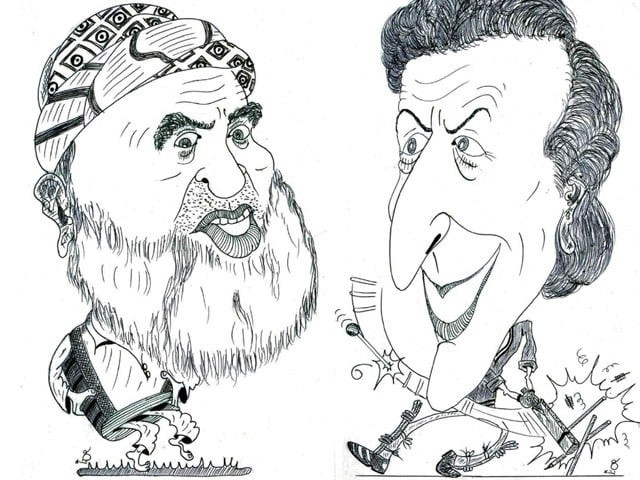Cartoons have been a standing feature of print media as well as an illustrative means of providing comic relief. With the evolution of participatory democracy, cartoons have evolved into political comment and are also an instrument of social debate.
The advent of camera photography transformed print journalism, however, photographs could not be given the same creative and commentary aspects that cartoons possess.
Cartoons are considered an irreverent description of the artist’s understanding of a certain social or political situation. The insolence of the brush draws out laughter from the readers but paints the leaders and the decision makers on the wrong side.
Mature democracies appreciate the value of a cartoon since these reflect the hidden angles of the public opinion. However, in autocracies and unstable democracies, cartoons tend to become a source of bitterness and acrimony.
In Pakistan, the tradition of the cartoons was almost single-handedly carried by Anwar Ali in the years immediately after independence. Anwar Ali created an innocent boy ‘Nanna’, who appeared on the front page of the premier English daily, Pakistan Times. However, the imposition of martial law in 1958 dampened the ardour of Anwar Ali.
During the 1960’s Urdu-language daily, Mashriq, brought out Mir Shahib. Mir Shahib’s comment, though hugely popular, was less political and more social. It was a reflection of the changing time in Bhutto’s rollercoaster years, where many cartoonists bore the brunt of the regime. Prominent among such cartoonists was Yousaf Lodhi (YL). Lodhi even brought out a selection of his cartoons entitled “My Leader”.
General Ziaul Haq’s regime was equally harsh with regards to the printed word and illustrative line. Nonetheless, at the time, Javed Iqbal from the Daily Jang, rose to prominence in those years. He introduced a restraint and conformism to the art of cartoon. Towards the end of the general regime came the English language daily, Frontier Post. The Frontier Post cartoonist Feica turned his brush into a scalpel. He grew frugal in his line and biting in his comments. His cartoons went a long way in popularising the Peshawar based publication.
Follow Hassan on Twitter @hassannaqvi5
Political cartoonist: When reality just isn't good enough!
The insolence of the brush draws out laughter from the readers but paints the leaders on the wrong side.



COMMENTS
Comments are moderated and generally will be posted if they are on-topic and not abusive.
For more information, please see our Comments FAQ